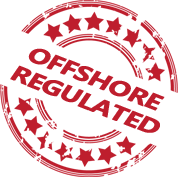Regarding the legitimacy of TRADE VIEW forex brokers, it provides FSA, ASIC and WikiBit, .
Is TRADE VIEW safe?
Rating Index
Pros
Cons
Is TRADE VIEW markets regulated?
The regulatory license is the strongest proof.
FSA Retail Forex License
The Seychelles Financial Services Authority
The Seychelles Financial Services Authority
Current Status:
Offshore RegulatedLicense Type:
Retail Forex License
Licensed Entity:
Trade View Technologies Ltd
Effective Date:
--Email Address of Licensed Institution:
edwin.cornelissen@tradeview.techSharing Status:
No SharingWebsite of Licensed Institution:
https://www.tradeview.techExpiration Time:
--Address of Licensed Institution:
CT House, Office 2B, Providence, Mahe, SeychellesPhone Number of Licensed Institution:
+248 4374480Licensed Institution Certified Documents:


ASIC Appointed Representative (AR)
Australia Securities & Investment Commission
Australia Securities & Investment Commission
Current Status:
UnverifiedLicense Type:
Appointed Representative (AR)
Licensed Entity:
Trade View Pty Ltd
Effective Date:
2019-12-11Email Address of Licensed Institution:
robertb@tradeview.com.auSharing Status:
No SharingWebsite of Licensed Institution:
www.tradeview.com.auExpiration Time:
--Address of Licensed Institution:
5 476 St Kilda Rd Melbourne VIC 3004 AustraliaPhone Number of Licensed Institution:
0400857562Licensed Institution Certified Documents:


Is Tradeview Safe or a Scam?
Introduction
Tradeview is a prominent player in the forex market, established in 2004, and is known for providing a range of trading services across various asset classes including forex, stocks, and commodities. As the online trading landscape continues to evolve, traders must exercise caution when selecting a broker. The potential for scams and fraudulent activities in the forex industry necessitates a thorough evaluation of any trading platform. In this article, we will investigate the credibility of Tradeview by examining its regulatory status, company background, trading conditions, customer fund safety, user experiences, and overall risk profile. Our assessment is based on a combination of qualitative analyses and quantitative data sourced from various reputable financial reviews and regulatory agencies.
Regulation and Legitimacy
The regulatory status of a broker is a critical factor in determining its safety and legitimacy. Tradeview operates under multiple regulatory bodies, which adds a layer of credibility to its operations. Below is a summary of Tradeview's regulatory information:
| Regulatory Body | License Number | Regulatory Region | Verification Status |
|---|---|---|---|
| Cayman Islands Monetary Authority (CIMA) | 585163 | Cayman Islands | Verified |
| Malta Financial Services Authority (MFSA) | IS/93990 | Malta | Verified |
| Labuan Financial Services Authority (LFSA) | N/A | Labuan | Verified |
Tradeview is regulated by the Cayman Islands Monetary Authority, the Malta Financial Services Authority, and the Labuan Financial Services Authority. While these regulators provide a framework for oversight, it is important to note that they are not classified as top-tier regulators like the FCA or SEC. This may imply that the level of investor protection is not as stringent as it would be under more recognized authorities. Moreover, Tradeview has faced scrutiny in the past, including regulatory disclosures, which raises questions about its historical compliance. This regulatory landscape necessitates caution, as the lack of robust oversight can expose traders to potential risks.
Company Background Investigation
Tradeview has a history that dates back nearly two decades, during which it has developed a reputation for providing competitive trading conditions. The company is structured as a group of international brokers, with headquarters located in the Cayman Islands and additional offices in Malta and Labuan. The ownership structure of Tradeview is transparent, with a clear delineation of its operational entities across different jurisdictions.
The management team at Tradeview boasts extensive experience in the financial services industry, which enhances its credibility. However, the transparency of the companys operations, including its financial disclosures and ownership details, remains a point of concern. The absence of detailed information about its financial standing and operational practices could lead to uncertainties regarding its reliability. As such, potential traders should approach Tradeview with an informed perspective, weighing the benefits against the potential risks associated with lesser-known regulatory frameworks.
Trading Conditions Analysis
Understanding the trading conditions offered by a broker is essential for evaluating its overall value. Tradeview provides a variety of trading accounts, with differing fee structures and trading conditions. Below is a comparison of key trading costs associated with Tradeview:
| Fee Type | Tradeview | Industry Average |
|---|---|---|
| Spread for Major Currency Pairs | 0.1 - 1.0 pips | 0.5 - 1.0 pips |
| Commission Model | $2.50 per standard lot | $5.00 per standard lot |
| Overnight Interest Range | Varies by instrument | Varies by broker |
Tradeview's spreads are competitive, particularly for its Innovative Liquidity Connector (ILC) accounts, which offer spreads starting from 0.0 pips. However, there are concerns regarding the high withdrawal fees on certain payment methods, which can deter traders from making frequent transactions. Additionally, the lack of comprehensive educational materials and resources may limit the effectiveness of novice traders. Overall, while Tradeview offers competitive trading conditions, the associated costs and fees require careful consideration, particularly for traders with limited capital.
Customer Fund Safety
The safety of customer funds is paramount when evaluating a brokers reliability. Tradeview implements several measures to ensure the security of client funds, including segregated accounts and regular audits to safeguard against potential financial mismanagement. Moreover, the broker provides negative balance protection, which prevents clients from losing more than their initial investment.
However, it is crucial to note that Tradeview does not currently offer a compensation scheme for investors in the event of insolvency. This absence of a safety net is a significant drawback, especially when compared to brokers regulated by top-tier authorities, which often provide such protections. Traders should be aware of these limitations and assess their risk tolerance accordingly, as the lack of comprehensive investor protection mechanisms may expose them to higher risks.
Customer Experience and Complaints
Analyzing customer feedback is essential for understanding a broker's reputation in the market. User experiences with Tradeview have been mixed, with some traders praising the platform for its execution speed and customer service, while others have raised concerns regarding withdrawal processes and customer support responsiveness. Below is a summary of common complaint types and their severity:
| Complaint Type | Severity Level | Company Response |
|---|---|---|
| Withdrawal Delays | High | Slow response times |
| High Fees | Medium | Addressed in FAQs |
| Platform Issues | Medium | Generally resolved |
One notable case involved a trader who experienced significant delays in fund withdrawals, highlighting the potential inefficiencies in Tradeviews operational processes. While the company has made efforts to address these issues, the frequency of such complaints raises concerns about its reliability.
Platform and Trade Execution
The trading platform is a critical component of the trading experience, and Tradeview offers several options, including MetaTrader 4, MetaTrader 5, and cTrader. User reviews indicate that the platforms are generally stable and user-friendly, with quick order execution and minimal slippage. However, there have been isolated reports of rejected orders during volatile market conditions, which may indicate potential issues with the platform's integrity.
The execution quality of Tradeview is generally regarded as satisfactory, yet traders should remain vigilant for any signs of manipulation or unfair practices. The absence of negative reviews regarding platform manipulation is a positive indicator, but ongoing scrutiny is warranted.
Risk Assessment
Using Tradeview involves several inherent risks that traders should consider. Below is a summary of the key risk areas:
| Risk Category | Risk Level (Low/Medium/High) | Brief Description |
|---|---|---|
| Regulatory Risk | Medium | Operates under mid-tier regulators |
| Fund Safety Risk | High | No investor compensation scheme |
| Platform Performance Risk | Medium | Occasional reports of execution issues |
To mitigate these risks, traders are advised to conduct thorough research, maintain a diversified portfolio, and utilize risk management strategies. Engaging with the platform through a demo account can also provide valuable insights into its functionality without risking real capital.
Conclusion and Recommendations
In conclusion, while Tradeview presents a range of attractive features and competitive trading conditions, it is essential to approach this broker with caution. The regulatory landscape, coupled with the lack of a comprehensive investor protection scheme, raises concerns about its overall safety.
For traders seeking a reliable forex broker, it may be prudent to consider alternatives that are regulated by top-tier authorities and offer robust investor protections. Brokers such as Interactive Brokers, OANDA, and Pepperstone may provide a more secure trading environment. Overall, conducting thorough research and weighing the pros and cons of Tradeview against your trading needs will help ensure a more informed decision-making process.
TRADE VIEW Similar Brokers Safe
Whether it is a legitimate broker to see if the market is regulated; start investing in Forex App whether it is safe or a scam, check whether there is a license.
TRADE VIEW latest industry rating score is 4.67, the higher the score the safer it is out of 10, the more regulatory licenses the more legitimate it is. 4.67 If the score is too low, there is a risk of being scammed, please pay attention to the choice to avoid.
